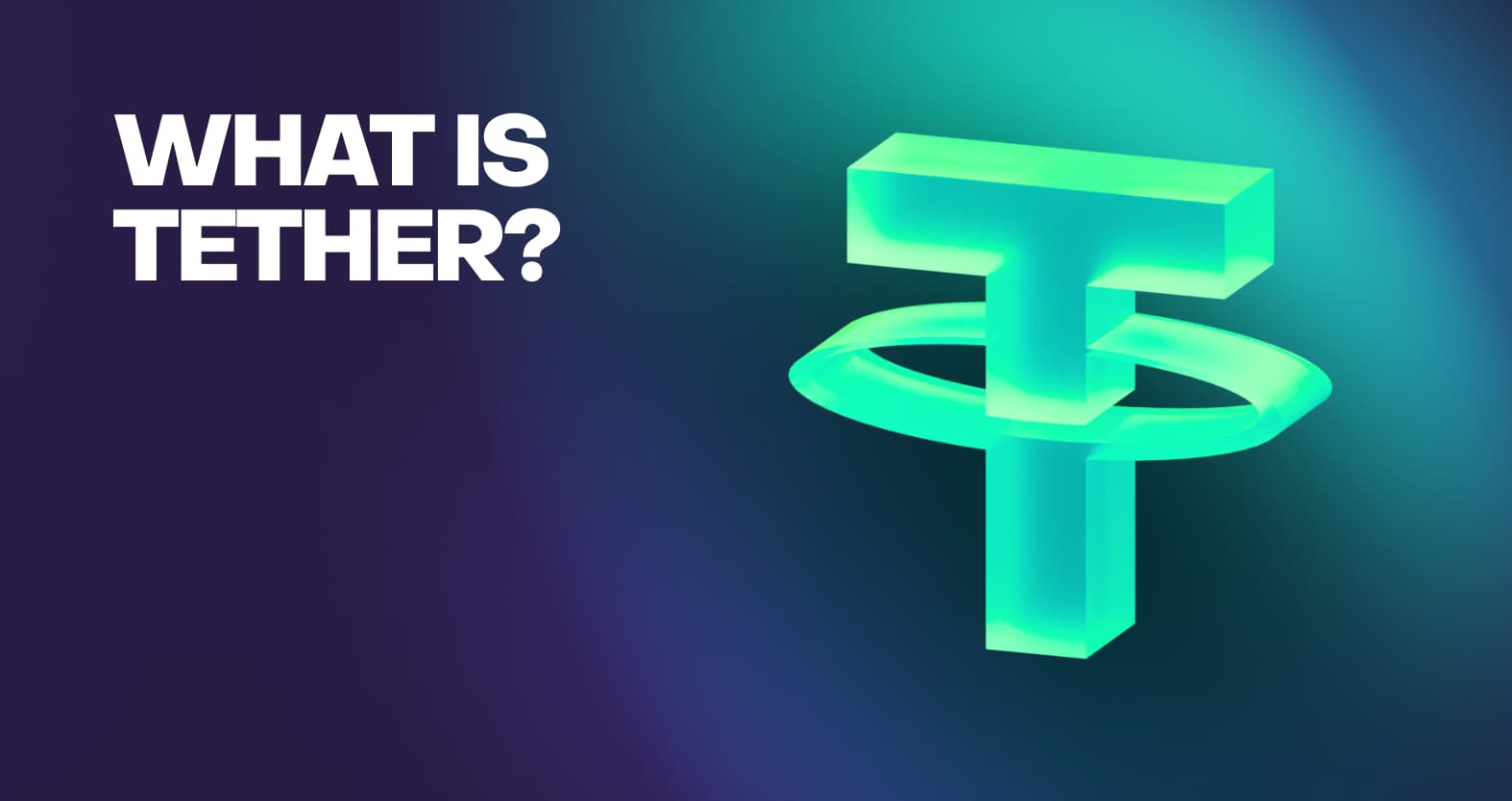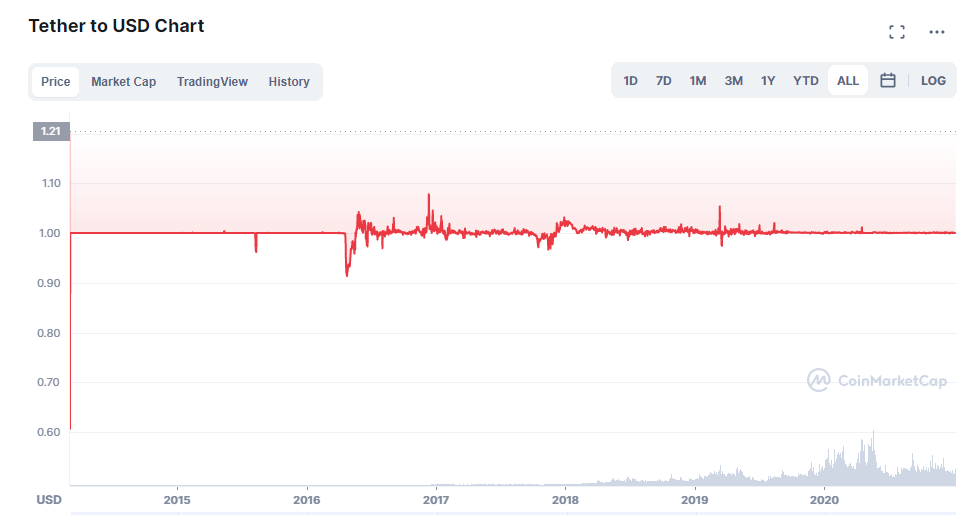06 October 2022
Updated: 03 February 2023
What Is Tether (USDT)? — Top Stablecoin By Market Cap

Table of contents
Over the years, many cryptocurrencies have come and gone, but a few remain a mainstay of the market. Besides Bitcoin and Ethereum, Tether is among those cryptocurrencies that have remained in portfolios for years — offering a blockchain-native alternative to the US dollar.
Of course, Tether is a stablecoin that suits different needs of users, but nonetheless, it has remained a part of the market — despite some controversies. The USDT stablecoin is one of the most popular stablecoins on the market, and its circulation is far above most of its competitors. Why is this the case, and how come Tether finds such deep entrenchment within the market?
What Is Tether?
The Tether cryptocurrency is a stablecoin where the USDT to USD value is linked on a 1:1 basis. This backing (or lack thereof) is the reason why Tether has been in the headlines for so long.
Stablecoins are digital currencies that are pegged to fiat currencies. For this reason, stablecoins serve as good ways to store capital as the market experiences volatility, as stablecoins are inherently non-volatile. Traders mostly use it for this purpose when it comes to cryptocurrency trading, and Tether is among the most popular stablecoins available on the market.
The Tether coin was created far back in 2014 and has steadily gained clout within the cryptocurrency sector. It has had a tumultuous few years, but that hasn’t stopped it from becoming a stablecoin juggernaut. Trading of the asset itself began in 2015.
How Does Tether Work?
Given that it is a stablecoin, as far as the Tether definition goes, it functions rather “normally” as a cryptocurrency. It isn’t in the same vein as Bitcoin or Ether, or any other cryptocurrency with a niche use case. To give you some scale of the popularity of Tether, in February 2021, USDT accounted for 57% of all crypto trades.
The USDT token itself runs on the Ethereum blockchain, though it also runs on EOS, TRON, Omni, Liquid Network, and Algorand, among others. However, not all exchanges support the other blockchain variants of Tether. Coinbase, for example, only supports Tether on the Ethereum blockchain.
You don’t have to think about cryptocurrency mining or any such activities with Tether. If you want to invest in other assets but are concerned about volatility, then it’s always sensible to have some amount of a stablecoin in your portfolio.

Tether Is Used Primarily To Tackle Market Volatility
First and foremost, Tether is a stablecoin, so its value remains pegged to $1. Stablecoins are used to beat the market’s volatility, and USDT has become one of the most popular stablecoins in that regard. Most other stablecoins are functionally the same, but it appears that Tether has an advantage over its competitors, possibly from the benefits of being a first-mover.
As for other features, there isn’t too much to say about Tether coin, given the fact that it is simply a stablecoin. Traders like the fact that the asset can be traded anywhere in the world and instantly be converted into the corresponding fiat currency. For citizens faced with their own volatile fiat currency, such as people from Venezuela, Lebanon, Turkey, and countless others, this also offers a non-volatile alternative for storing value.
Stablecoins don’t have very much use beyond the purpose of beating volatility and storing value on the blockchain. With these capabilities, one could argue that USDT and other stablecoins are among the most critical aspects of the market, certainly the decentralized finance market.
Many of DeFi’s top yield farming platforms have liquidity pools that feature a stablecoin, and USDT is a frequent presence in these groups.
Tether Coin Controversies
As far as development is concerned, there hasn’t been too much in the way of Tether news. However, in many other ways, you could say Tether is the busiest project of them all. One could go far as to say that among all the P2P network controversies that have taken place in the past, Tether has the unfortunate position of being the most controversial.
Years of scrutiny regarding its reserves have led to multiple controversies within and outside the crypto space. Many crypto enthusiasts have been calling for Tether to release a proper audit of its reserves, and Tether has yet to do this. It has released some other documents suggesting a lack of 1:1 reserves, but not an audit licensed by a third party.
Conclusion
As a major player in the cryptocurrency market, there is no doubt that Tether has a considerable part to play in the market. However, there are concerns about its reserves and the backing of its large supply.
It appears that Tether is certainly here to stay and that it will plow through whatever legal disputes it may be facing. If it manages this, then Tether can certainly take the role of the market’s top stablecoin. However, that is still an open-ended question, so it’s worth keeping an eye on.
Hold and Trade USDT On AtomicDEX
AtomicDEX is a non-custodial multi-coin wallet and atomic swap DEX. Store Tether as well as Bitcoin, Dogecoin, Dash, Qtum and many other coins in your own wallet. When you're ready to trade, AtomicDEX supports cross-chain swaps. Your keys, your coins. AtomicDEX supports USDT on several blockchain networks such as Ethereum, BNB Chain, Avalanche, and more.




